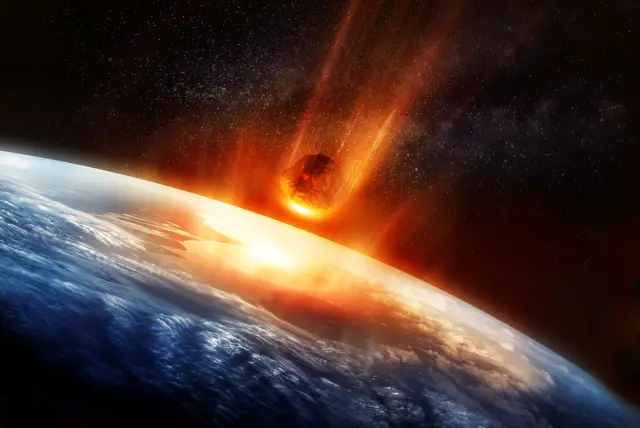The asteroid is unlikely to hit the planet, however, expected to pass by at a distance of more than 4.5 million kilometers. For comparison, the distance between the Earth and the Moon is around 384,000 km. – about a twelfth of that.
But 2018 AH has come by Earth before – and at a much closer distance.
Back in 2018, it flew past the planet at a distance of 296,758 km, three-quarters of the distance from the Earth to the Moon. It had gone unnoticed due to its dimness, and scientists therefore didn’t see it coming.
Since that time, no asteroid of such size has come so close to the Earth – and none are expected to until 2028, when the massive, nearly kilometer-long 153814 (2001 WN5) will arrive. But it won’t hit the planet either, being expected to pass at a distance of around 249,000 km – even closer than 2018 AH did.
But what would happen if an asteroid the size of 2018 AH struck the Earth?
But the last impact from an asteroid this big was in 1908 above the Podkamennaya Tunguska River in Russia, in what has now become known as the Tunguska event.
This asteroid is believed to have been around the same size as 2018 AH, if not smaller.
When the asteroid exploded in the air several kilometers above the area, it produced a massive 12 megaton explosion, causing widespread destruction for thousands of kilometers. That would make it about 800 times more powerful than “Little Boy,” the approximately 15-kiloton atomic bomb detonated during World War II over Hiroshima, and 600 times more than “Fat Man,” the 20-kiloton one detonated over Nagasaki three days later.
According to Encyclopedia Brittanica, a US government report at the time stated that Hiroshima suffered 135,000 casualties, or more than half of its population, and Nagasaki 64,000, a third of its population.
The death toll from the Tunguska event was extremely low, however, with only around three people thought to have been killed in it, due to how remote and sparsely populated the region was. But the damage was still evident, with about 80 million trees completely flattened, winds of around 27 km., a second bursting around and a loud noise heard far and wide. Tremors and air waves were felt as far away as even Washington and Indonesia.
The few eyewitness accounts that do exist recounted the terrifying explosion, strong winds, tremors and incredibly loud noises.
“The sky split in two and fire appeared high and wide over the forest,” recounted a man who was about 65 kilometers south of the explosion.
“The split in the sky grew larger, and the entire northern side was covered with fire,” he said. “At that moment I became so hot that I couldn’t bear it as if my shirt was on fire; from the northern side, where the fire was, came strong heat. I wanted to tear off my shirt and throw it down, but then the sky shut closed, and a strong thump sounded, and I was thrown a few meters. I lost my senses for a moment, but then my wife ran out and led me to the house.
“After that such noise came, as if rocks were falling or cannons were firing; the Earth shook, and when I was on the ground, I pressed my head down, fearing rocks would smash it,” he said. “When the sky opened up, hot wind raced between the houses, like from cannons, which left traces in the ground like pathways, and it damaged some crops. Later we saw that many windows were shattered, and in the barn, a part of the iron lock snapped.”
The Tunguska event is the largest in recorded history – though larger prehistoric ones happened – and is one of the largest explosions ever recorded, far more powerful than many nuclear bombs.
If 2018 AH hit, it could cause something similar.
According to NASA, any asteroid 140 meters in diameter or larger could have a potentially catastrophic impact if it crashed into Earth.
The destructive nature of asteroids, even small ones, is something well-known to experts, with space agencies around the world monitoring for potential catastrophic impacts, as well as researching potential means of stopping them.
One method for possibly stopping the impact of an asteroid is through the use of deflection, which would mean launching something to slightly alter its path. The most prominent of these efforts is the Double Asteroid Redirection Test (DART) Mission currently underway, the result of efforts by NASA and the Applied Physics Laboratory.
In layman’s terms, it means punching an asteroid with a rocket with enough speed to change its direction by a fraction of a percent.
The DART Mission is humanity’s first real attempt at testing a defense against an asteroid impact and was launched towards the Didymos binary asteroid system.
Natan Rothstein contributed to this report.
I fail to see why something, however big, is of interest if it is going to miss earth by 4.5million kilometres. There has been an outbreak of breathless announcements lately, not just from the JPost either.




